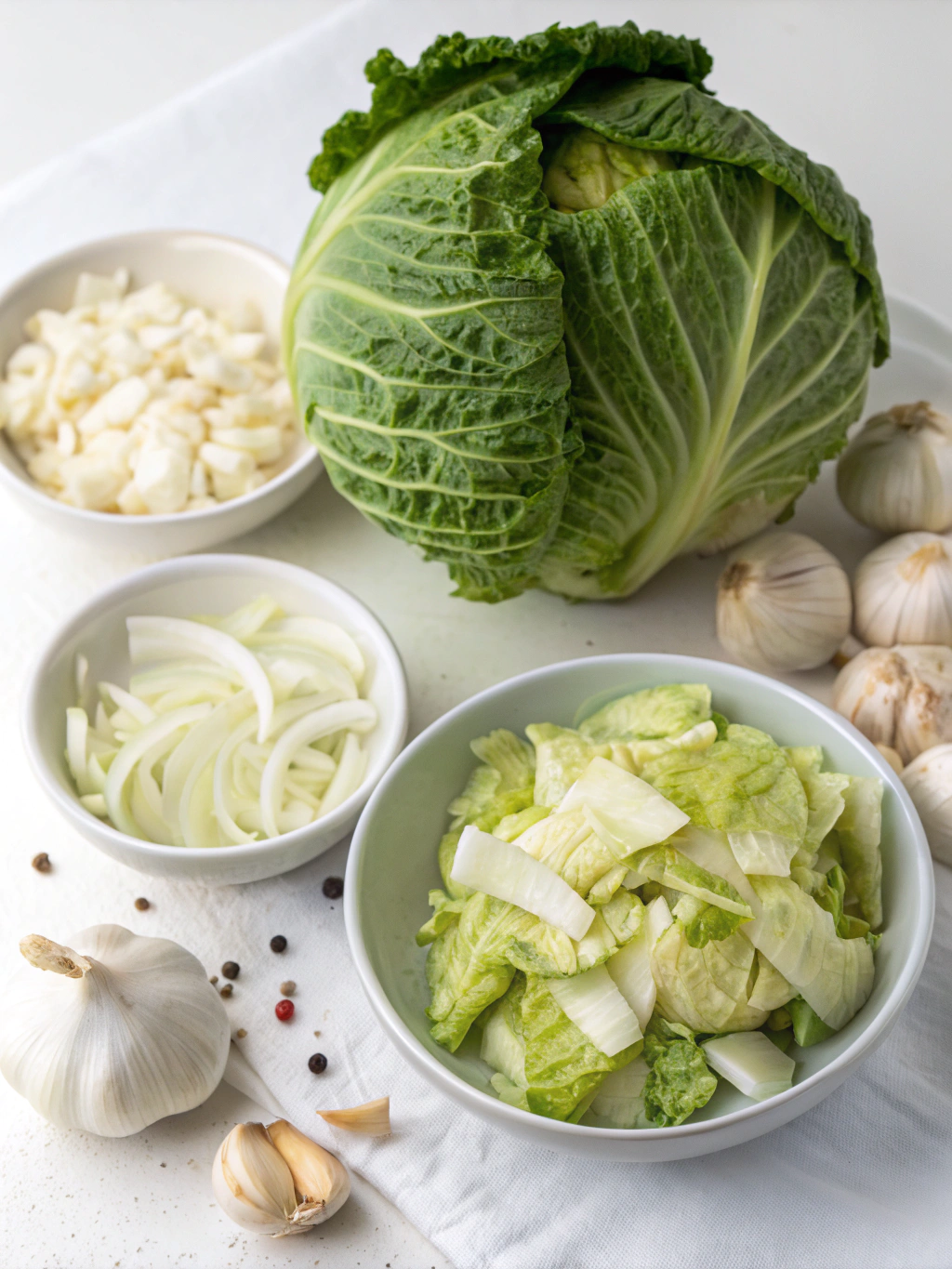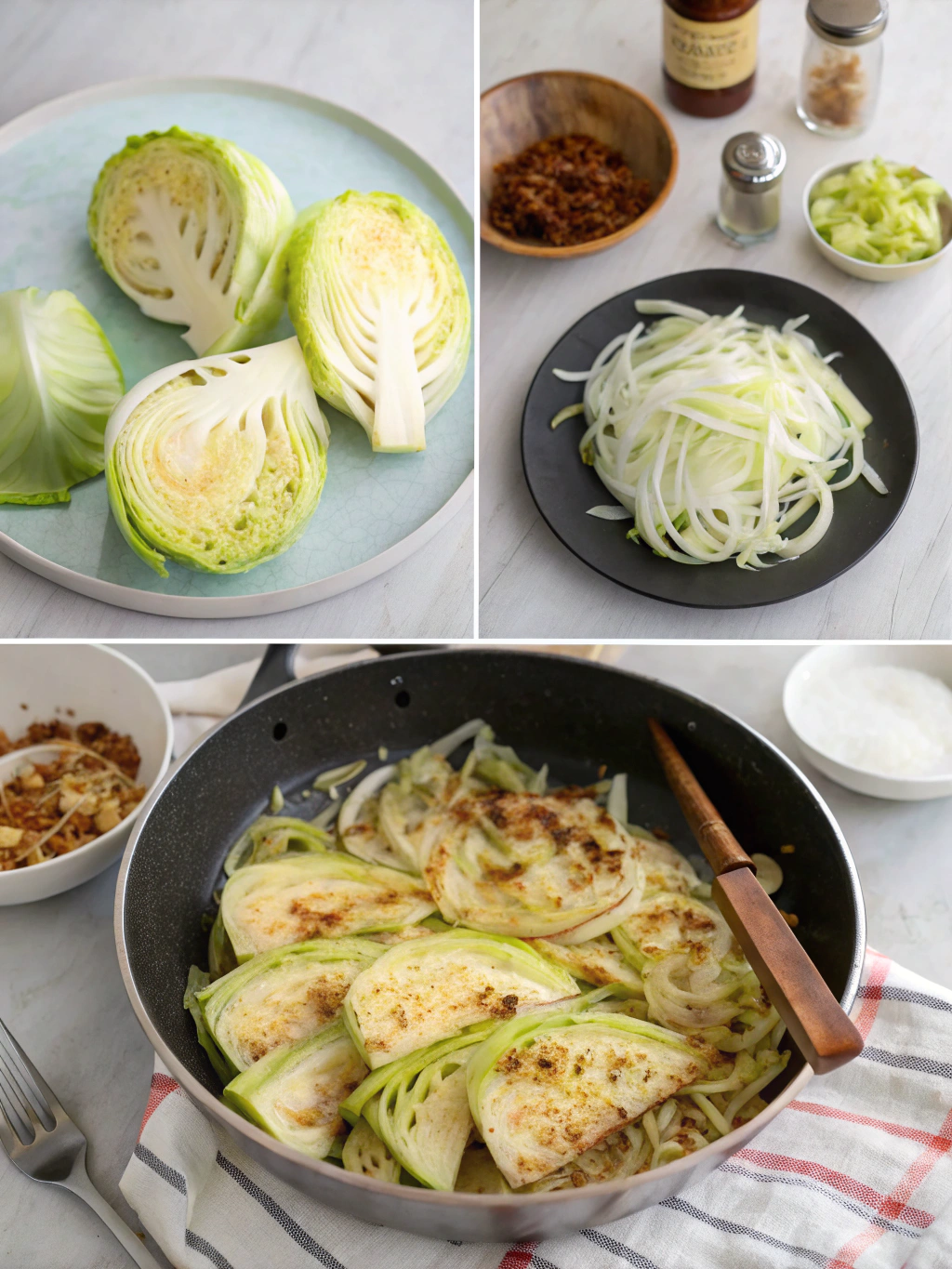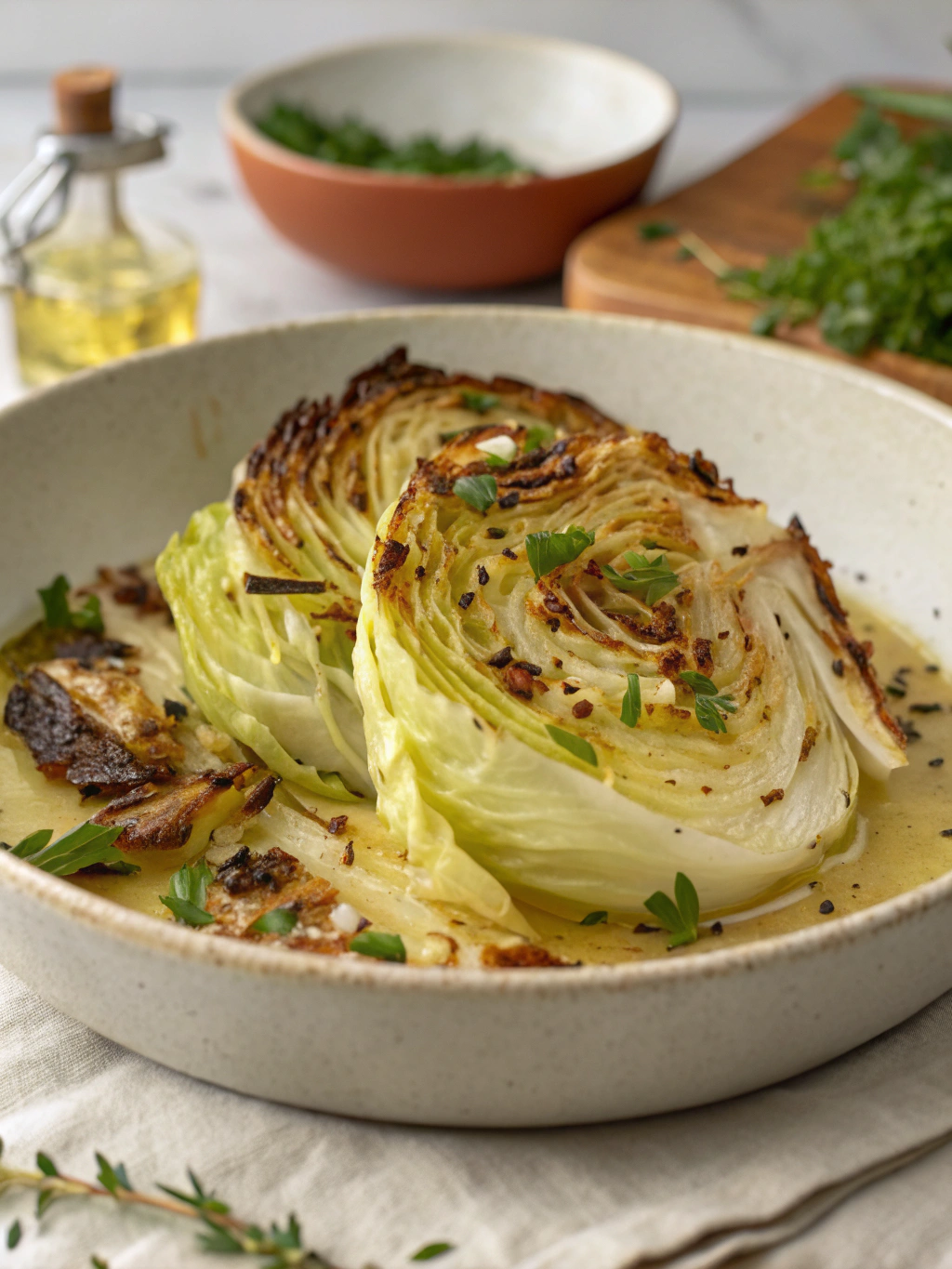Are you tired of the same boring vegetables gracing your dinner table night after night? What if I told you that one of the most underrated vegetables could transform into a flavorful, nutritious side dish in just 15 minutes? Sauteed Cabbage is the game-changing recipe that will revolutionize your weeknight dinners and prove that simple ingredients can create extraordinary flavors.
This humble cruciferous vegetable transforms from raw and crisp to tender and caramelized when properly sautéed. The natural sugars develop a subtle sweetness while maintaining a satisfying bite. Whether you’re looking to add more vegetables to your family’s diet or seeking an affordable side dish that pairs with virtually any protein, this recipe delivers on all fronts.
Ingredients List

The beauty of this recipe lies in its simplicity. You’ll need just a handful of pantry staples to create this delicious side dish:
- 1 medium head of green cabbage (about 2 pounds), cored and thinly sliced
- 3 tablespoons olive oil or butter (or a combination of both)
- 1 medium yellow onion, thinly sliced
- 3 cloves garlic, minced
- 1 teaspoon salt (or to taste)
- ½ teaspoon black pepper
- 1 tablespoon apple cider vinegar
- 1 teaspoon paprika (optional, for color and mild flavor)
- Red pepper flakes to taste (optional, for heat)
Feel free to substitute red cabbage for a more colorful presentation, though cooking time may vary slightly. Savoy cabbage works beautifully too, offering a more delicate texture. For those avoiding dairy, stick with olive oil instead of butter. Coconut oil provides an interesting tropical note if you’re feeling adventurous.
Timing
This efficient recipe requires minimal time investment, making it perfect for busy weeknights. Preparation time clocks in at just 10 minutes, primarily spent slicing the cabbage and onion. Active cooking time is 12-15 minutes, bringing your total time to approximately 25 minutes from start to finish.
Compared to roasted cabbage recipes that can take 45 minutes or more, this sautéed version saves you nearly 50% of your cooking time. The quick cooking method also preserves more nutrients and maintains a pleasant texture that appeals to even the pickiest eaters.
Step-by-Step Instructions

Step 1: Prepare the Cabbage
Remove the outer leaves from your cabbage head and cut it into quarters. Remove the tough core from each quarter, then slice the cabbage into thin strips, about ¼-inch wide. Uniform slicing ensures even cooking and prevents some pieces from becoming mushy while others remain too firm.
Step 2: Heat Your Pan
Choose a large skillet or wide sauté pan – you’ll need plenty of surface area since cabbage starts voluminous before cooking down. Heat the olive oil over medium-high heat until it shimmers but doesn’t smoke. A properly heated pan prevents sticking and promotes even browning.
Step 3: Sauté the Aromatics
Add the sliced onion to the hot oil and cook for 3-4 minutes until it begins to soften and turn translucent. The onions should sizzle gently when they hit the pan. Add the minced garlic during the last 30 seconds, stirring constantly to prevent burning.
Step 4: Add the Cabbage
Add the sliced cabbage to the pan in batches if necessary – don’t overcrowd. Season immediately with salt and pepper. The cabbage will seem like too much at first, but it reduces significantly as it cooks. Toss everything together using tongs or a large spoon.
Step 5: Cook Until Tender
Continue cooking for 8-10 minutes, stirring occasionally, until the cabbage wilts and begins to caramelize around the edges. Some pieces should develop golden-brown spots while maintaining a slight bite. Avoid stirring too frequently, which prevents proper browning.
Step 6: Final Seasoning
Remove the pan from heat and stir in the apple cider vinegar, which adds brightness and balances the natural sweetness. Taste and adjust seasoning with additional salt, pepper, or paprika as desired. The vinegar should enhance, not overpower, the cabbage’s natural flavors.
Nutritional Information
This Sauteed Cabbage recipe packs impressive nutritional value into every serving. One cup contains approximately 60 calories, making it an excellent low-calorie side dish option. The dish provides 3 grams of fiber, supporting digestive health and promoting satiety.
Cabbage is exceptionally rich in vitamin C, with one serving providing over 50% of your daily requirement. This powerful antioxidant supports immune function and collagen production. The recipe also delivers significant amounts of vitamin K, essential for bone health and blood clotting.
The sulfur compounds in cabbage, particularly glucosinolates, have been linked to potential cancer-fighting properties in numerous studies. These compounds are better preserved through quick cooking methods like sautéing compared to lengthy boiling or steaming processes.
Healthier Alternatives for the Recipe
Transform these already healthy recipes into an even more nutritious powerhouse with simple modifications. Replace half the olive oil with vegetable broth for a lower-fat version that maintains moisture and flavor. This substitution reduces calories by approximately 30% per serving.
Boost the antioxidant content by mixing purple and green cabbage varieties. The anthocyanins in purple cabbage provide additional anti-inflammatory benefits. Add shredded carrots during the last few minutes of cooking for extra beta-carotene and natural sweetness.
For those following a keto diet, increase the fat content by using grass-fed butter or adding a tablespoon of coconut oil. Sprinkle with toasted nuts or seeds for healthy fats and protein. Bacon bits make an indulgent addition while keeping carbs minimal.
Serving Suggestions
This versatile Sauteed Cabbage pairs beautifully with countless main dishes. Serve alongside roasted chicken, grilled pork chops, or pan-seared salmon for a complete, balanced meal. The mild flavor complements both delicate fish and robust red meats equally well.
For vegetarian meals, pile the sautéed cabbage over quinoa or brown rice and top with a fried egg. The runny yolk creates a luxurious sauce that ties everything together. Add crumbled feta cheese and toasted pine nuts for Mediterranean flair.
Transform leftovers into breakfast hash by reheating with diced potatoes and serving with poached eggs. The cabbage adds unexpected depth to traditional breakfast fare. Use it as a filling for tacos, wraps, or grain bowls for quick, nutritious lunches.
Common Mistakes to Avoid
Success with sautéed cabbage depends on avoiding several common pitfalls that can turn this simple dish into a soggy disappointment:
- Overcrowding the pan: Too much cabbage at once creates steam instead of browning, resulting in mushy texture
- Using too low heat: Medium-high heat is essential for proper caramelization and flavor development
- Oversalting early: Salt draws out moisture; add gradually and taste frequently
- Overcooking: Cabbage should retain some bite; mushy vegetables are unappetizing
- Skipping the acid: Vinegar or lemon juice brightens flavors and prevents the dish from tasting flat
Monitor the cooking process closely during the final minutes. The difference between perfectly caramelized and overcooked cabbage is often just 1-2 minutes. Trust your senses – the cabbage should smell sweet and nutty when properly done.
Storing Tips for the Recipe
Properly stored Sauteed Cabbage maintains quality for up to four days in the refrigerator. Allow the dish to cool completely before transferring to airtight containers. Glass containers work best as they don’t absorb odors and allow you to see the contents easily.
For meal prep enthusiasts, this recipe doubles or triples beautifully. Prepare large batches on Sunday for easy weeknight sides. The flavors actually improve after a day, as the seasonings have time to meld together.
Freezing is possible but not recommended, as the texture becomes watery upon thawing. If you must freeze, undercook slightly and add extra seasoning after reheating. Reheat gently in a skillet over medium heat, adding a splash of broth if needed to prevent sticking.
Conclusion
This simple sautéed cabbage recipe proves that extraordinary flavors don’t require complicated techniques or expensive ingredients. With just 25 minutes and basic pantry staples, you can create a nutritious, delicious side dish that elevates any meal. The caramelized edges and tender texture will convert even the most skeptical vegetable avoiders.
Ready to transform your dinner routine?
Grab a head of cabbage and give this recipe a try tonight. Share your results in the comments below, and don’t forget to tag us on social media with your creative variations. Your family’s new favorite side dish is just one sauté away!

